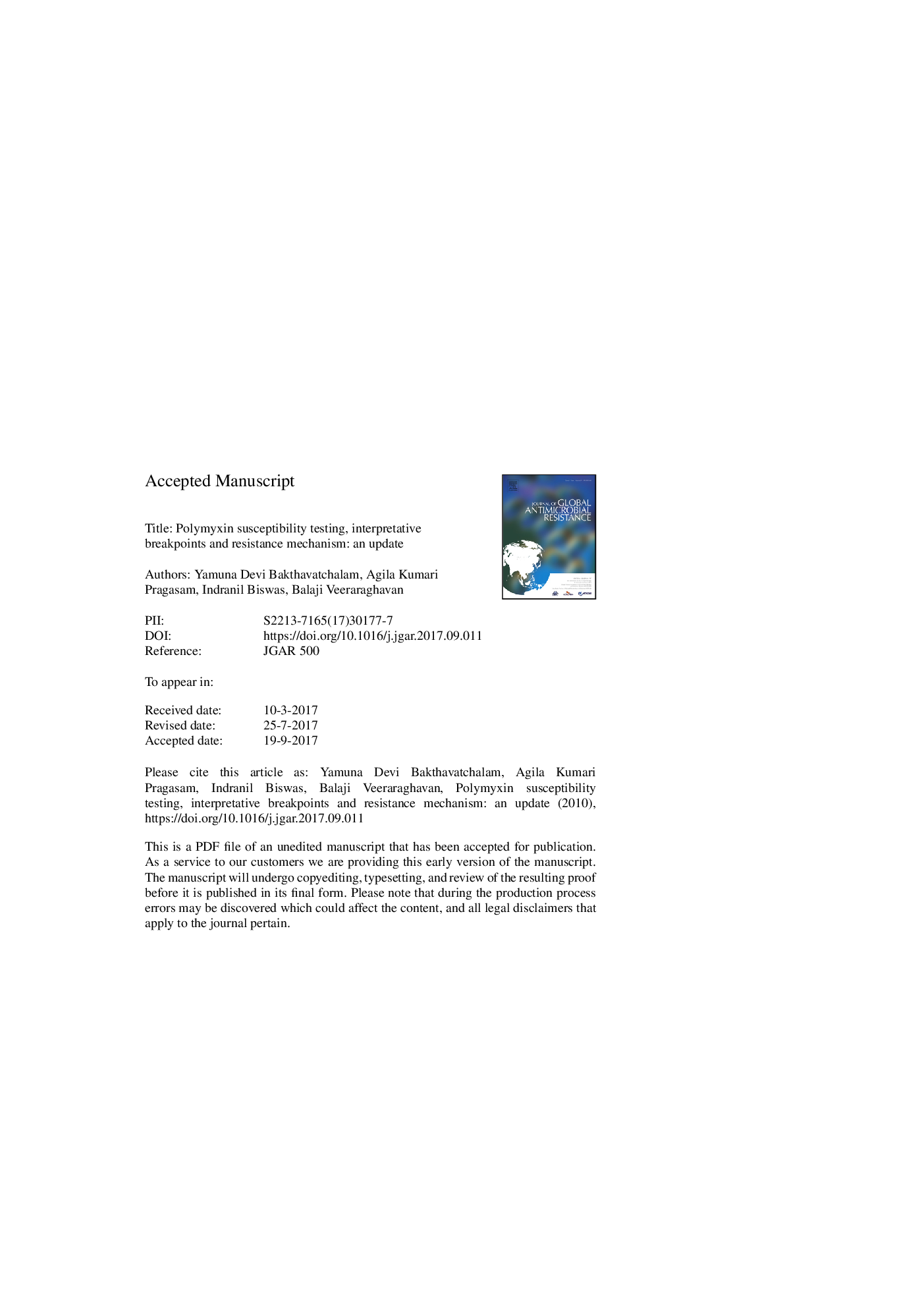| Article ID | Journal | Published Year | Pages | File Type |
|---|---|---|---|---|
| 8746250 | Journal of Global Antimicrobial Resistance | 2018 | 50 Pages |
Abstract
Emerging multidrug-resistant (MDR) nosocomial pathogens are a great threat. Polymyxins, an old class of cationic polypeptide antibiotic, are considered as last-resort drugs in treating infections caused by MDR Gram-negative bacteria. Increased use of polymyxins in treating critically ill patients necessitates routine polymyxin susceptibility testing. However, susceptibility testing both of colistin and polymyxin B (PMB) is challenging. In this review, currently available susceptibility testing methods are briefly discussed. The multicomponent composition of colistin and PMB significantly influences susceptibility testing. In addition, poor diffusion in the agar medium, adsorption to microtitre plates and the synergistic effect of the surfactant polysorbate 80 with polymyxins have a great impact on the performance of susceptibility testing methods This review also describes recently identified chromosomal resistance mechanisms, including modification of lipopolysaccharide (LPS) with 4-amino-4-deoxy-l-arabinose (L-Ara4-N) and phosphoethanolamine (pEtN) resulting in alteration of the negative charge, as well as the plasmid-mediated colistin resistance determinants mcr-1, mcr-1.2, mcr-2 and mcr-3.
Related Topics
Life Sciences
Immunology and Microbiology
Applied Microbiology and Biotechnology
Authors
Yamuna Devi Bakthavatchalam, Agila Kumari Pragasam, Indranil Biswas, Balaji Veeraraghavan,
